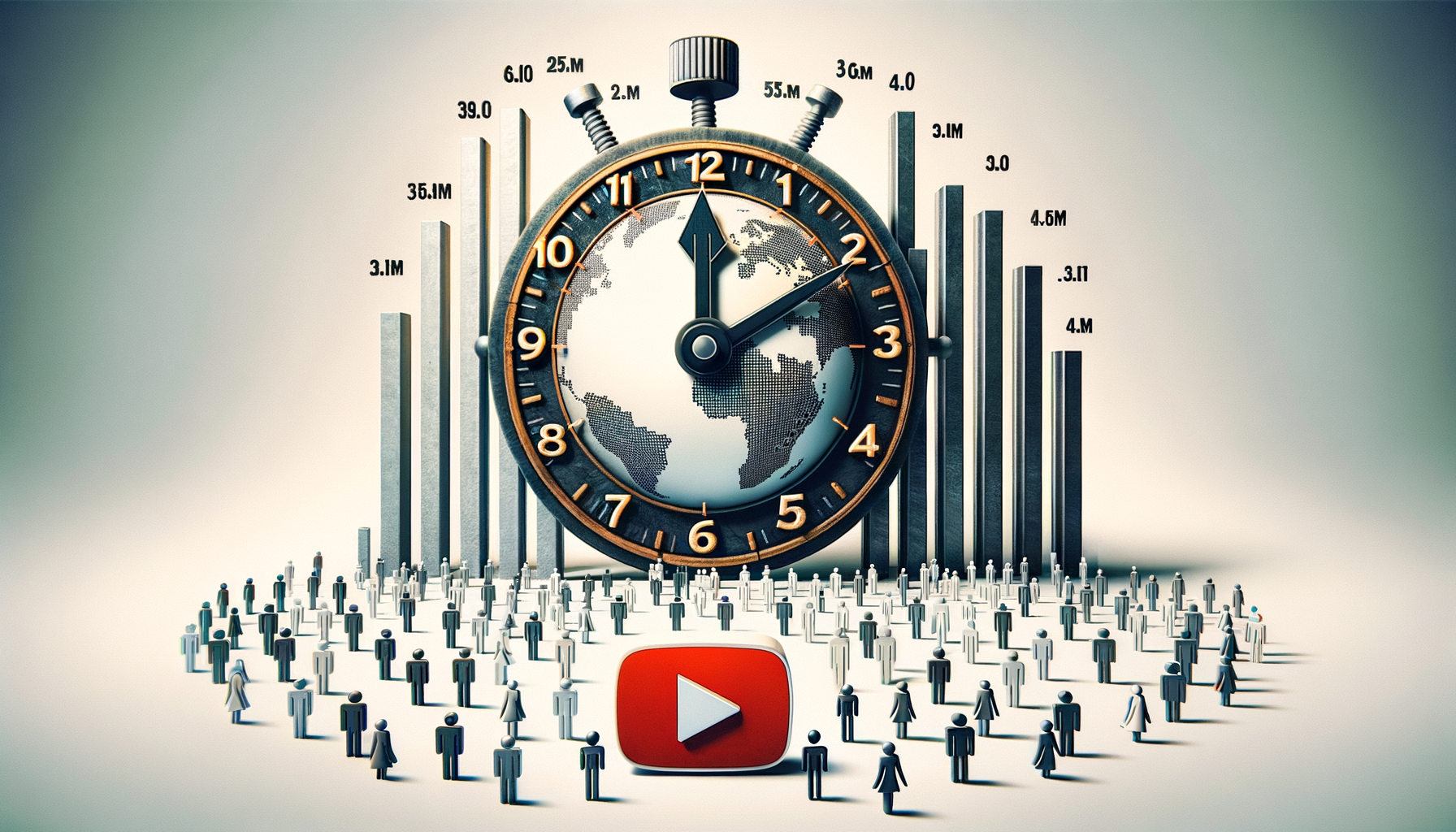“Unlocking Optimal Timing: When to Post Your Content on YouTube for Maximum Engagement”

Maximizing YouTube Success: Leveraging Timing to Boost Viewership
YouTube, the premier video sharing platform globally, provides marketing professionals with a potent tool for establishing brand visibility and connecting with target audiences. However, simply creating and uploading content to YouTube does not suffice. Effectively tapping into YouTube’s potential necessitates a strategic approach, notably with regard to the timely posting of videos. Establishing the optimal time to release YouTube content can significantly enhance viewer engagement and channel performance. This article delves into tried and true principles to guide your content scheduling on YouTube, enabling you to maximize your channel’s reach and impact.
Timing is Key
In the realm of digital marketing, timing plays a pivotal role in determining the success of a content strategy. This truism certainly extends to YouTube. Aligning content posting schedules with peak audience activity periods can facilitate higher viewer engagement levels and subsequently improve video performance metrics. Contrarily, posting videos during low-activity periods may lead to weak performance, as the video might get lost amid constantly uploaded content.
Understanding Peak Viewing Times
Several studies performed across the YouTube platform have sought to establish the best periods for video posting. In general, weekdays seem to be more favorable than weekends. It is postulated that during weekdays, people are more likely to incorporate YouTube video viewing into their daily routines, e.g., during lunch breaks or after work.
However, there’s a variance across all weekdays. Early in the week, viewer engagement tends to be lower. It begins to rise from Wednesday onward, and Thursday and Friday are commonly recognized as the best days to post videos. These days see high viewer engagement that theoretically maximizes your videos’ visibility.
As for weekends, data indicates lower viewer engagement. The reasoning behind this is people are more likely to engage in other activities such as outdoor events, family gatherings, or catching up on personal tasks, leaving less time for YouTube.
On the optimal time of the day to post a video on YouTube, the general consensus is that window between 2 PM and 4 PM (Eastern Time) proves to be quite rewarding. This two-hour window spans the end of the work/school day and the beginning of personal time, during which people tend to relax and browse through YouTube content.
Nevertheless, the guidelines provided should only serve as a starting point. It is critical to understand that these timings can vary across different audiences, influenced by factors such as geography, age, profession, and personal schedules.
Localizing Posting Schedules
If your target audience spans multiple geographies, it is imperative to consider the various time zones when planning your YouTube content posting schedule. Posting your video at 2 PM Eastern Time, for example, might not work favorably if a significant proportion of your audience is located in different time zones where this time might fall in the middle of the night or early morning. You have to take into account where the bulk of your audience is and plan accordingly.
Understanding the YouTube Algorithm
Contrary to general assumptions, achieving success on YouTube is not solely driven by posting content during peak audience activity periods. YouTube’s algorithm plays a crucial role in video presentation and consequent viewership.
YouTube’s algorithm is an intricate system that utilizes various metrics and user behavioral patterns to decide what content to recommend to each user. The algorithm attaches a high level of significance to audience engagement. Metrics such as viewer retention rates, likes, comments, shares, and new subscribers gained through a video all contribute to the “value” that the algorithm assigns to your video. High engagement metrics can drive your video to be suggested to more viewers, thus enhancing its visibility.
YouTube’s “View Velocity”
Another critical factor to consider is “view velocity,” a term that stands for the rate at which a video gains views in the immediate hours following its posting. A video that experiences high view velocity is deemed popular and will consequently be given greater visibility by the YouTube algorithm.
Understanding Audience Behavior
A thorough understanding of your audience’s behavior forms the bedrock of any successful YouTube strategy. Insights into your audience’s browsing preferences and habits allow you to tailor your content and posting schedule to their behavior, consequently optimizing your videos’ performance.
You can leverage YouTube’s built-in analytic tools to access vital statistics about your audience, information such as their geographical location, peak browsing times, viewer age, and gender.
Testing and Adaptation
Lastly, recognizing the value of testing and adaptation is key. Given the dynamic nature of the digital platform and the ever-evolving habits of digital consumers, maintaining a rigid schedule based on initial data may not be the best approach. Instead, regularly testing different posting schedules, measuring performance, and making necessary adjustments should become an integral part of your YouTube strategy.
Conclusion
In this digital age where competition for attention is fierce, leveraging timing to maximize viewership on YouTube requires a strategy that extends beyond mere intuition. It necessitates an understanding of peak viewing periods, audience behavior, and the nuances of the YouTube algorithm. The effectiveness of a designated posting schedule varies across channels and audiences, necessitating continuous testing and adjustment. When these factors are painstakingly considered and adequately catered to, the result is a more robust YouTube presence, greater audience engagement, enhanced brand visibility, and ultimately, business growth.

Recent Comments